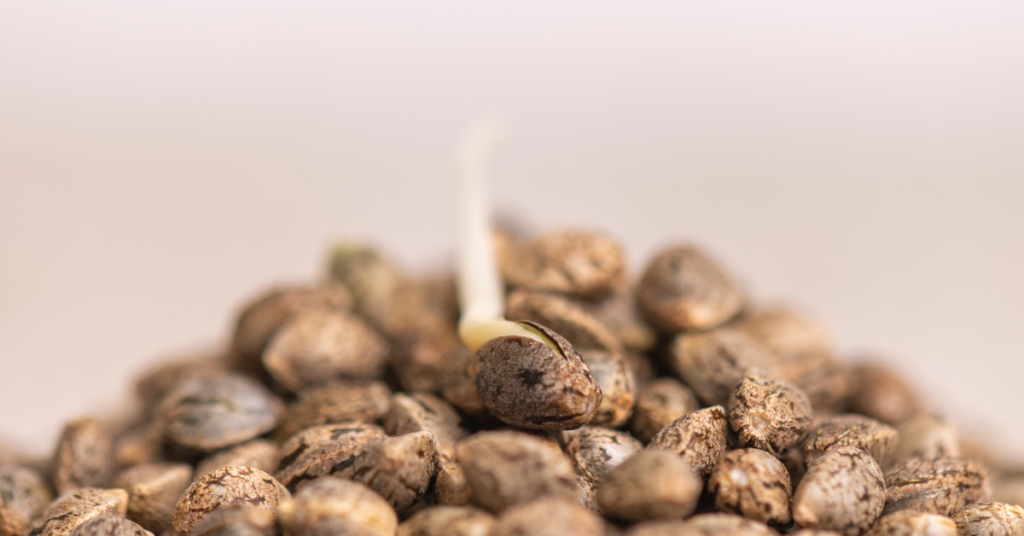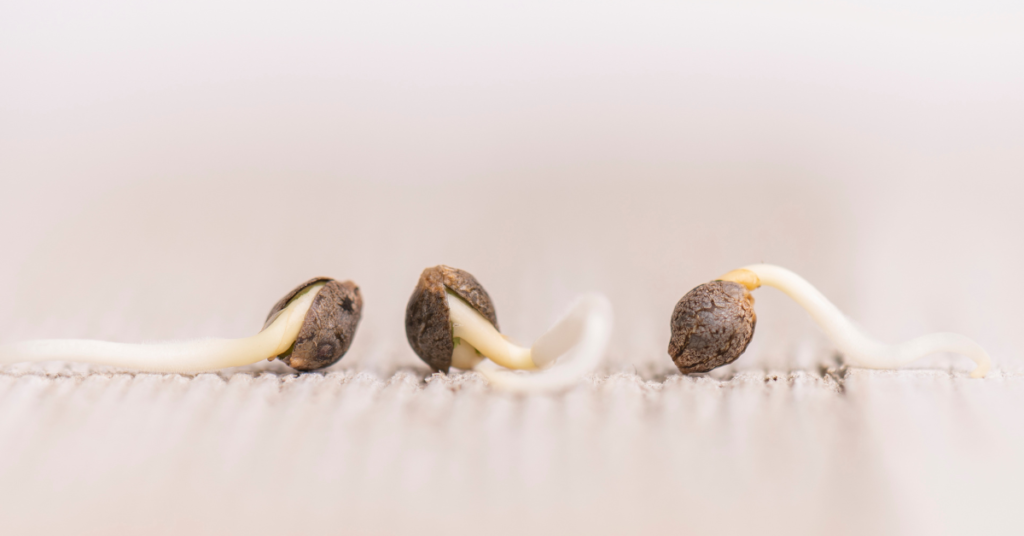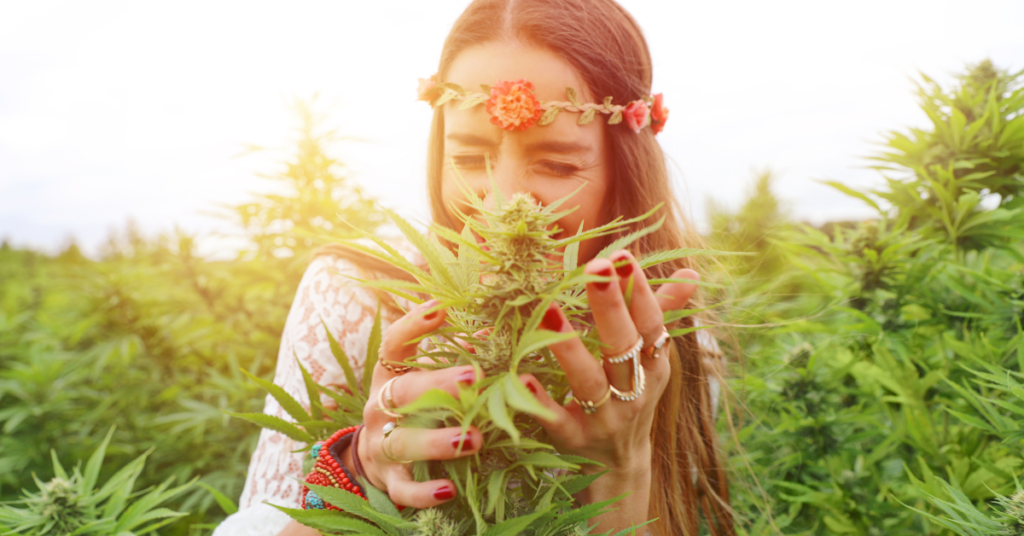Cannabis cultivation at home can be an exciting, rewarding, and therapeutic venture.
With an understanding of the fundamental requirements, anyone can grow weed and produce a successful yield.
However, before embarking on your cannabis-growing journey, it’s crucial to consider the legality of homegrown cannabis in your area.
This guide will walk you through the process of how to grow weed, from the initial stages to the final harvest, providing you with the knowledge you need to cultivate your own high-quality buds.
Table of Contents
1. Understanding the Legal Framework
The first step is to determine whether it’s legal to grow weed in your state or region.
Some areas permit home growing for both medical and adult recreational use, while others only allow it for medical patients. In some regions, growing cannabis at home remains illegal.
Always ensure you are familiar with local laws to avoid legal issues.
2. Choosing the Right Seeds to Grow Weed

Cannabis cultivation begins with choosing the right seeds. Cannabis plants are typically dioecious, meaning they are either male or female.
Female plants produce the buds we value for their high cannabinoid content, while male plants are primarily used for breeding.
When purchasing seeds to grow weed, opt for feminized seeds, which are bred to produce female plants, ensuring you get the most out of your crop.
3. Indoor vs. Outdoor Cultivation
Your choice between indoor and outdoor cultivation will significantly affect your process to grow weed.
Outdoor cultivation is cost-effective and allows you to take advantage of natural sunlight and rainfall. However, it requires a suitable growing area with ample sunlight and protection from pests and harsh weather.
On the other hand, indoor cultivation offers control over environmental factors like temperature, humidity, and light intensity. But, it requires an initial investment in equipment and a dedicated space for cultivation.
4. The Cannabis Life Cycle
Growing cannabis requires an understanding of the plant’s life cycle, which consists of the following stages:
4.1 Germination (1-7 days)

Germination is the process of getting your cannabis seeds to sprout. The main requirements for germination to grow weed are moisture, warmth, and darkness.
4.2 Seedling Stage (2-3 weeks)
Once the seeds have sprouted, they enter the seedling stage. Seedlings require a lot of light and should be kept in a humid environment.
4.3 Vegetative Stage (2-8 weeks)
The vegetative stage is the growth phase of the plant. During this stage, the plant develops its structure, growing in size and height, and increasing the number of leaves and branches.
4.4 Flowering Stage (6-8 weeks)
The flowering stage is when the plant starts producing buds. This stage requires a change in the light cycle to trigger the flowering process.
4.5 Harvesting Stage
Finally, the harvesting stage is when your plant is ready to be cut, dried, and cured, resulting in high-quality buds ready for consumption.
5. Cannabis Growing Basics
5.1 Light

Cannabis plants need light to carry out photosynthesis, the process by which they convert light energy into chemical energy for growth.
Outdoor growers can maximize the sunlight from Mother Nature while indoor growers require the right light to grow weed successfully.
The amount of light your plant receives will affect its growth and yield.
5.2 Water
Cannabis plants, like all living organisms, need water to survive. However, overwatering can lead to root rot and other issues. It’s essential to find a balance and water your plants when the soil becomes dry to the touch.
5.3 Soil
Cannabis plants can be grown in a variety of mediums. However, organic soil rich in nutrients is often the best choice for novice growers. Soilless mediums, like coco coir and hydroponic systems, are also viable options.
5.4 Nutrients
Cannabis plants require a variety of nutrients to thrive. These include macronutrients like nitrogen, phosphorus, and potassium, and micronutrients like calcium and magnesium.
5.5 Temperature and Humidity
Cannabis plants prefer a warm and humid environment. The ideal temperatures are in the 70s or low 80s Fahrenheit, with relative humidity levels between 40% and 60%.
6. Caring for Your Cannabis Plants
To successfully grow weed, plants require regular care and attention.
This includes watering, feeding nutrients, controlling temperature and humidity, and managing pests and diseases.
Regular inspections of your plants can help you identify any potential issues early and address them promptly.
7. Harvesting Your Cannabis

Harvesting cannabis at the right time is crucial to obtaining high-quality buds.
The point of harvest is typically determined by the appearance of the trichomes, tiny resinous glands on the buds. When most of the trichomes have turned milky white, and some are amber, it’s generally the best time to harvest.
8. Drying and Curing Your Buds
After harvesting, the buds need to be dried and cured. This process involves hanging the buds in a controlled environment to slowly dry them out, preserving their potency and flavor.
After drying, the buds are then cured by storing them in airtight containers and periodically opening them to let in fresh air.
9. Enjoying Your Homegrown Cannabis
After all the hard work and patience to grow weed, you can finally enjoy your homegrown cannabis! Whether you choose to smoke, vape, or use it in edibles, homegrown cannabis offers a sense of accomplishment that can’t be matched.
10. Troubleshooting Common Cannabis Growing Problems
Growing cannabis isn’t always smooth sailing.
You may encounter cannabis plant problems like nutrient deficiencies, pests, or diseases.
Familiarizing yourself with common cannabis growing problems and their solutions can help you address these issues promptly and effectively.
Parting Remarks on How to Grow Weed
Cannabis cultivation can be a rewarding hobby and a great way to enjoy high-quality, homegrown buds.
As with any gardening project, it requires time, patience, and a bit of trial and error.
But with the right knowledge and tools, you can cultivate cannabis plants that will provide you with a plentiful harvest.
